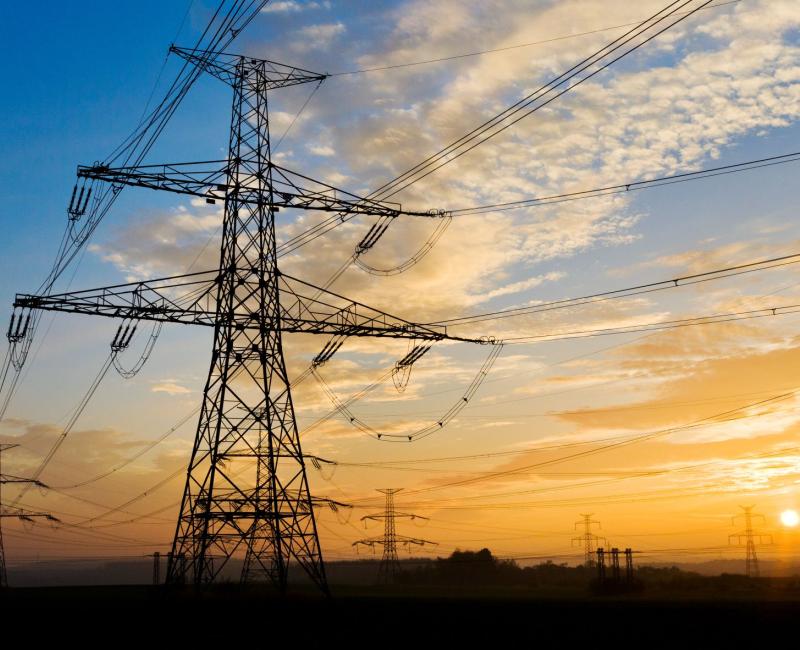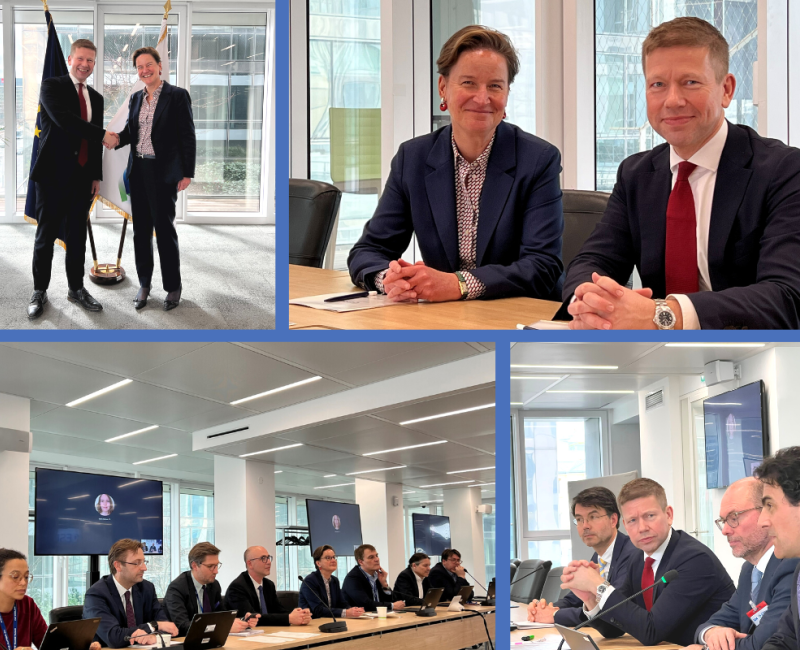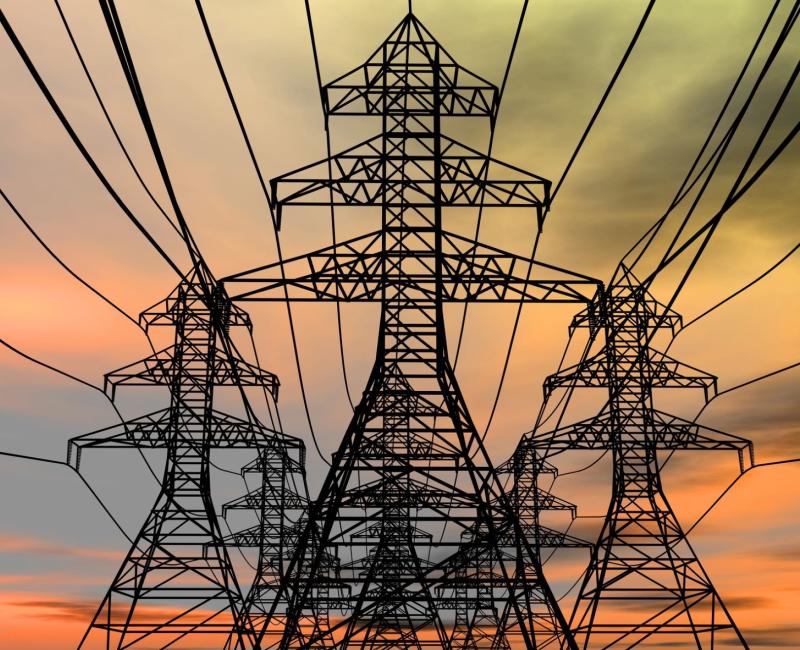ACER invites EU electricity market participants to take part in a survey on the second auctions in the day-ahead market

ACER invites EU electricity market participants to take part in a survey on the second auctions in the day-ahead market
What is it about?
Some regions of Europe’s electricity single day-ahead coupling (SDAC) rely on so-called “second auctions” in case of extremely high or low prices. Those auctions, only triggered by extreme prices, allow market participants to adapt their bids prior to a second run of the SDAC auction.
Recently, Transmission System Operators (TSOs) and Nominated Electricity Market Operators (NEMOs) have introduced second auctions in the bidding zones of the Baltic region.
Hence, ACER would like to better understand how EU market participants consider the current functioning and potential evolutions of second auctions. ACER therefore invites EU market participants to fill in a survey by Thursday, 30 March 2023.
ACER webinar on a consultancy study on hydrogen networks
ACER webinar on a consultancy study on hydrogen networks

Cookie Policy
Cookie Policy

When you browse this Website, we deploy cookies and collect Personal Data as necessary in order to ensure the technical functioning of this Website and of some of its functionalities and features (e.g., the Recite Me toolbar).
If you consent to it, your Personal Data will also be used for aggregated statistics (whose purpose is to help us monitor and improve the effectiveness of our Website) and for the delivery of the Recite Me toolbar.
You can find in this page instructions on how to manage your consent, regarding cookies.
For more information on how we process your Personal Data, please see the ACER Website Data Protection Notice.
Definitions
Cookies are small text files that may be sent to and registered on your computer by the websites you visit, to then be re-sent to those same sites when you visit them again. It is thanks to these cookies that those websites can “remember” your actions and preferences (e.g., login data, language, font size, other display settings, etc.), so that you do not need to configure them again when you next visit the website, or when you change pages within a website.
Cookies are used for electronic authentication, monitoring of sessions and storage of information regarding your activities when accessing a website. They may also contain a unique ID code which allows tracking of your browsing activities within a website, for statistical or advertising purposes. Some operations within a website may not be able to be performed without the use of cookies which, in certain cases, are technically necessary for operation of the website.
When browsing a website, you may also receive cookies from websites or web servers other than the website being visited (i.e., “third-party cookies”).
There are various types of cookies which may be stored on your computer for different periods of time and that may have different characteristics and functions:
- Essential cookies (also referred to as technical/functional cookies) – This category includes cookies which are only used to send messages through an electronic communications network, or which are needed to provide services you request. This includes, among others, cookies that allow users to login, cookies that are used to remember choices made by a user when accessing a website, such as products selected for purchase. Typically, this type of cookies does not require user’s consent;
- Non-essential cookies – This category may include, for example, “profiling cookies” (i.e., cookies used to create profiles on users and to send advertising messages in line with the preferences revealed by users while browsing websites) and “performance cookies” (i.e., cookies used to collect information about user’s behaviour on a website and other statistical information in order to measure the effectiveness of a website). Typically, this type of cookies requires specific consent from users, although this may vary according to the applicable law.
Cookie Policy
Use of cookies and other tracking technologies on the Agency’s Website
Technical functioning of the Website
The Agency uses cookies for the technical functioning of the Website, to activate specific functions within the Website, and to configure the Website according to your choices (e.g., regarding cookies, display preferences), in order to improve your experience.
| Technical name | Function and purpose | Duration |
| Cookie-agreed | Displays the cookies banner. | 3 months |
| Cookie-agreed-version | Keeps track of the user’s choices in relation to cookies subject to consent. | 3 months |
| SSESS* | Allows the proper functioning of the Content Management System (CMS) of the Website. | 23 days |
| Multimedia section – Power BI | ||
| WFESessionID | Necessary to enable a Power BI session, a Microsoft tool that helps visualize data. | Expires when session ends |
| ARRAffinitySameSite | Set by websites run on the Windows Azure cloud platform and used for load balancing to make sure the visitor page requests are routed to the same server in any browsing session and optimise response times. | Expires when session ends |
| ai_user | Collects statistical usage and telemetry information for apps built on the Azure cloud platform. This is a unique user identifier cookie enabling counting of the number of users accessing the application over time (statistical purposes). | 1 year |
| ai_session | Collects statistical usage and telemetry information for apps built on the Azure cloud platform. This is a unique anonymous session identifier cookie used to improve performance (performance purposes). | 30 minutes |
| Multimedia section – Audio files | ||
| sclocale | Set by SoundCloud to store the language settings of the user. | 1 year |
| ajs_anonymous_id | To store last visit. | 1 year |
| pxcts | Used to detect fraud and bot activity. | Until the user closes their browser |
| _pxvid | Used to detect fraud and bot activity. | 1 year |
| datadome | This a security cookie based upon detecting BOTS and malicious traffic. | 1 year |
| _px3 | To provide protection against hackers. | 1 year |
| _pxde | To provide protection against hackers. | 1 year |
| OptanonConsent | Stores information about the categories of cookies the site uses and whether visitors have given or withdrawn consent for the use of each category. | 1 year |
| Multimedia section – YouTube embedded videos | ||
| YSC | Used to track the views of embedded videos on Youtube pages. | Expires when session ends |
| _Secure YEC | Stores the user's video player preferences using embedded YouTube video. | 13 months |
| Consent | This cookie stores information about how the end user uses the website and all advertising that the end user may have seen before visiting the said site. The main purpose of this cookie is Targeting/ Advertising. | 13 months |
| PREF | YouTube collects user data through videos embedded in websites, which is aggregated with profile data from other Google services in order to display targeted advertising to web visitors across a broad range of their own and other websites. This is a common Google cookie, used across several of their services. Stores user preference, can be used to personalise ads on Google searches. | 13 months |
| OptanonConsent | Stores information about the categories of cookies the site uses and whether visitors have given or withdrawn consent for the use of each category. | 1 year |
| Extranet Cookies (enabled when you download documents stored on extranet.acer.europa.eu – applies only to old documents that were uploaded to SharePoint prior to the website migration to Drupal) | ||
| WSS_FullScreenMode and Search Session | Microsoft SharePoint cookie for internal use of the application to enable communication, identify the user session and/or exchange information with the content manager. | Expires when session finishes |
| FedAuth | Keeps track of the user’s session and access rights assigned to the user. | 5 days |
Cookie Policy
Europa Analytics
Europa Analytics is the corporate service, which monitors and evaluates the effectiveness and efficiency of the Agency’s Website (as well as that of other EU institutions).
It uses an open-source analytics platform, Matomo (formerly Piwik), fully controlled by the European Commission. This platform enables the protection of end-user personal data thanks to features such as IP address de-identification. On top of that, the Agency has created a feature to manage users’ consent to the collection of users’ browsing experience for aggregated statistics.
Europa Analytics is configured to use the second level domain europa.eu (used by the websites of European institutions) and to store first-party cookies.
Cookies (from Matomo) used by Europa Analytics (“pk_id”, that identifies unique visitors and expires in 28 days and “_pk_ses” that is used to temporarily store data for the visit and expires in 30 minutes) enable the European Commission to track the following information about visitors. We use this information to prepare aggregated statistics reports of visitors’ activity:
- IP address (masked)
- Location: country, region, city, approximate latitude and longitude (Geolocation)
- Date and time of the request (visit to the site)
- Title of the page being viewed (Page Title)
- URL of the page being viewed (Page URL)
- URL of the page that was viewed prior to the current page (Referrer URL)
- Screen resolution of user's device
- Time in local visitor's time-zone
- Files that were clicked and downloaded (Download)
- Links to an outside domain that were clicked (Outlink)
- Pages generation time (the time it takes for webpages to be generated by the webserver and then downloaded by the visitor: Page speed)
- Main language of the browser being used (Accept-Language header)
- Browser version, browser plugins (PDF, Flash, Java, …) operating system version, device identifier (User-Agent header)
- Language of the visited page
- Campaigns
- Site Search
- Events
To improve the accuracy of the produced reports, information is also stored in a first-party cookie from our Website and then collected by Europa Analytics:
- Random unique Visitor ID
- Time of the first visit for the specific visitor
- Time of the previous visit for the specific visitor
- Number of visits for the specific visitor
The European Commission retains full control of the data collected through first-party cookies by storing the data in servers fully owned and controlled by the European Commission itself.
Besides some session cookies, a random ID persistent cookie is generated by Matomo, which allows Europa Analytics to identify when a user returns to the site. This cookie has an expiration date of 13 months, after which it is automatically removed from the user's device.
By default, the browsing experience of our website visitors is NOT tracked by Europa Analytics. You may, though, choose to consent to contributing your browsing experience on our Website for us to produce aggregated statistics.
If you consent to Europa Analytics, then Europa Analytics is activated, and some relevant cookies loaded. You can always decide to withdraw your consent or consent again at any time.
If you wish to consent to (or withdraw your consent from) Europa Analytics, please click here.
Cookie Policy
Recite Me toolbar
The Agency has implemented the language and accessibility functionalities made available by Recite Me in order to increase the usability and inclusiveness of its Website. As noted in the ACER Website Data Protection Notice, the launch of the Recite Me toolbar (and the processing of your Personal Data connected to the use of the Toolbar) is based on your prior consent that you provide by clicking on the Recite Me icon on the top right corner of the website. Should you consent to it, the following cookies will be installed in order to allow you to use the toolbar.
| Recite.Persist | Allows the Recite Me toolbar to persist across subsequent web pages of the Website, once the Recite Me toolbar is launched (this cookie is only deployed when the Recite Me toolbar is launched by the user) | 2-day expiry unless manually cleared from the browser cookies |
| Recite.Preferences | Remembers user’s accessibility settings on the Recite Me toolbar so that these can be loaded automatically on subsequent web pages of the Website (this cookie is only deployed when a choice is made by a user that has launched the Recite Me toolbar in relation to the settings made available on the toolbar). | 2-day expiry unless manually cleared from the browser cookies. |
Should you wish to withdraw your consent to the processing of your Personal Data for the purpose of the use of the Recite Me toolbar, click here.
Cookie Policy
Do not track preferences
Do Not Track is a function that allows visitors no to be tracked by websites. Do Not Track options are available in a number of browsers including:
If you enable the Do Not Track option in your web browser, we will respect your choice and your browsing experience on our Website will not be tracked.
For more information on how to set the preferences for cookies via your browser, please also refer to the following instructions:
CAUTION: If you block or delete technical/function cookies used by the Website, the Website may become impossible to browse, certain services or functions of the Website may become unavailable or other malfunctions may occur. In this case, you may have to modify or manually enter some information or preferences every time you visit the Website.
ACER updates the LNG price assessment methodology ahead of the launch of its LNG benchmark

ACER updates the LNG price assessment methodology ahead of the launch of its LNG benchmark
What is it about?
Since 13th January, as required by Council Regulation (EU) 2022/2576, ACER publishes a daily Liquefied Natural Gas (LNG) price assessment. On 8 March, ACER will start applying an updated version (Beta 2.0) of the methodology for its LNG price assessments.
Why update the methodology and why now?
- The aim (as per the Regulation) is for ACER to produce an objective price assessment that reflects the price of LNG spot transactions.
- On some days, there were insufficient eligible LNG spot transactions to calculate the price assessment as per the established methodology (which required a minimum of 5 transactions over 5 rolling days).
- After observing the initial methodology (Beta 1.0) for a few weeks, ACER has decided to update it.
- The Regulation also requires ACER to publish a LNG benchmark by 31 March 2023. ACER intends to start applying the new LNG price methodology as of 8 March in order to verify it until the benchmark’s go-live on 31 March 2023.
What are the main changes to the LNG price assessment methodology and why is it relevant?
- A single EU LNG price will be calculated on top of the current practice of prices for 2 zones (North-West Europe and South Europe).
- ACER’s Beta 1.0 methodology used a 5-day rolling window to aggregate transactions and thus build a price that is representative of the market conditions. Beta 2.0 further shifts the weight of the calculation to the most recent transactions and is at the same time extending the calculation window to 10 days.
This will increase the robustness of the LNG price calculation.
Has ACER consulted stakeholders on its work?
ACER works closely with stakeholders to have a meaningful LNG price assessment that is genuinely representative and not arbitrary. ACER developed and now subsequently refined, with the help of an LNG Expert Group and in consultation with the European Commission, a robust beta methodology underpinning the ACER LNG price assessment.
In addition, ACER intends to further update the Guidance on reporting LNG market data, and improve its TERMINAL platform to improve the user experience. The updated reporting Guidance will mainly clarify important details to assure better data quality.
Both updated documents will benefit from the advice of its LNG Expert Group, close engagement with market participants (e.g. via roundtables, webinars), input from other stakeholders and ACER price assessors’ experience so far.
Access the updated LNG price assessment methodology (Beta 2.0).
ACER and ESMA update Memorandum of Understanding to strengthen cooperation

ACER and ESMA update Memorandum of Understanding to strengthen cooperation
What is it about?
ACER and the European Securities and Markets Authority (ESMA) and have signed an updated Memorandum of Understanding (MoU) which strengthens collaboration between the two institutions. The MoU notably incorporates new cooperation areas under the Market Correction Mechanism (MCM) Regulation and benchmarks related to the energy sector. It also details the role of the recently established ACER–ESMA Task Force.
ACER and ESMA will continue to cooperate in relation to Regulation of wholesale energy markets, which encompass both energy derivatives and spot markets. The cooperation will primarily be achieved through on-going consultations, exchange of information and cross-participation in joint meetings of working groups and task forces.
Main areas covered by the MoU
- Coordinated and consistent approach to market abuse framework under the Regulation on wholesale energy market integrity and transparency and the Market Abuse Regulation to further enhance market integrity in energy and energy derivative markets;
- Technical cooperation on data and knowledge with respect to the functioning of energy and energy derivative markets; and
- LNG price assessments and benchmarks administered by ACER and other energy-related benchmarks relevant for ACER's or ESMA's mandates.
Background
ACER and ESMA have a long-established cooperative relationship. The first MoU was signed in July 2013.
In October 2022, in the context of the energy crisis, ACER and ESMA enhanced their efforts to strengthen oversight of energy and energy derivative markets. They launched the idea of a joint ACER–ESMA Task Force and highlighted possible areas of cooperation. More here.
ACER and ESMA published preliminary data reports concerning the adoption of the EU Regulation establishing an MCM to protect Union citizens and the economy against excessively high prices in January 2023. See ACER report here and ESMA report here. The provisions governing the MCM started applying on 15 February 2023.
Both agencies released on 1 March their respective Effects Assessments. See ACER report here and ESMA report here.
ACER opens a public consultation on changes to the methodology for calculating scheduled exchanges resulting from single day-ahead electricity market coupling

ACER opens a public consultation on changes to the methodology for calculating scheduled exchanges resulting from single day-ahead electricity market coupling
What is it about?
On 25 January 2023, the national regulatory authorities (NRAs) of all EU Member States, referred to ACER a joint proposal of all Transmission System Operators (TSOs). The proposal contains amendments to the methodology for calculating scheduled exchanges resulting from single day-ahead market coupling pursuant to Article 43 of Commission Regulation (EU) 2015/1222. ACER initiates the procedure and opens a public consultation.
The main amendments that TSOs propose are on how scheduled exchanges between the Nominated Electricity Market Operators (NEMOs) trading hubs are calculated.
What are the next steps?
ACER has 6 months (until 25 July 2023) to assess the TSOs’ proposal.
To collect the views of the stakeholders, a public consultation on the TSOs’ proposal runs from 1 to 29 March 2023. In particular, ACER is interested in:
- The calculation of the scheduled exchanges between NEMO trading hubs; and
- Any other necessary amendments.
Access the public consultation and read more.
ACER publishes its assessment report on the market effects resulting from the gas Market Correction Mechanism

ACER publishes its assessment report on the market effects resulting from the gas Market Correction Mechanism
What is the report about?
Today, ACER publishes its assessment report on the effects of the Market Correction Mechanism (MCM) on energy markets and security of supply.
Background to the MCM
The MCM Regulation (December 2022) establishes a Market Correction Mechanism to protect citizens and the economy against excessively high gas prices. The MCM sets a bidding limit on certain financial derivatives traded at EU exchanges with the aim of limiting EU gas prices. This bidding limit is activated when specific conditions are met.
The Regulation tasks ACER and the European Securities and Markets Authority (ESMA) with assessing the market effects from the introduction of the Market Correction Mechanism (MCM) and submitting their MCM effect assessment reports to the European Commission by 1 March 2023. Both reports are intended to assist the Commission in its decision of extending the MCM to the derivatives traded at other Virtual Trading Points (‘VTPs’) in the EU and in assessing whether the key design elements of the MCM need to be reviewed. ACER and ESMA already published preliminary reports on 23 January 2023. ESMA also published their final MCM effects assessment report today.
MCM seems not to have a discernible gas market impact to date
Neither ACER nor ESMA have identified significant impacts (positive or negative) that could be unequivocally and directly attributed to the adoption of the MCM.
However, one should not infer from this that the MCM might not have any impacts on financial and energy markets or on security of supply in the future. ACER and ESMA continue to emphasise the need to regularly monitor gas markets and gas trading activities to identify risks and to assist in detecting potential impacts of the MCM in the future.
Challenges of extending the MCM to derivatives linked to other EU Virtual Trading Points (VTPs)
- ACER finds valid arguments for extending the MCM only to VTPs where the liquidity of gas derivative trading is modest to high. ACER considers that the extension of the MCM to other VTPs would not likely lead to significant negative effects in gas markets.
- ACER finds valid arguments for using the same activation and de-activation conditions, making use exclusively of the Dutch TTF front-month price and the same dynamic price-bidding limit at the EU VTPs (where the MCM is extended to other VTPs).
No technical reasons to review the key design elements of the MCM
- ACER could not identify a need for revising the price references used for calculating the reference price.
- ACER could not identify technical reasons to change the current activation or de-activation conditions of the MCM or for changing the dynamic price-bidding limit.
ACER will continue monitoring the effects of the MCM in energy markets and on security of energy supply.
ACER Market Correction Mechanism Effects Assessment Report.
ESMA Effects Assessment of the impact of the Market Correction Mechanism on financial market.
ACER decides not to approve nor amend ENTSO-E’s European Resource Adequacy Assessment 2022

ACER decides not to approve nor amend ENTSO-E’s European Resource Adequacy Assessment 2022
What is it about?
Mandated by law, the European Resource Adequacy Assessment (ERAA) is ENTSO-E’s annual assessment of the risks to EU security of electricity supply for up to 10 years ahead. ENTSO-E is the European association of Transmission System Operators (TSOs) for electricity.
The ERAA should provide an objective basis for identifying electricity adequacy concerns and assess the need for any additional national measures ensuring security of electricity supply such as the introduction of temporary capacity remuneration mechanisms.
In the ACER Decision published today, ACER decided to neither approve nor amend ENTSO-E’s ERAA 2022.
ERAA 2022 was not approved by ACER
On ERAA 2022, ACER finds several positives:
- ACER acknowledges ENTSO-E’s substantial efforts to improve ERAA 2022 in the context of an unprecedented energy crisis.
- ACER points to improvements on some methodological aspects, such as the investment model and demand-side response, and input assumptions.
- ACER recognises ENTSO-E’s enhanced stakeholder engagement and transparency.
However, ACER also finds room for improvement:
- ERAA 2022 has certain simplifications or deviations from the methodological framework that compromise the robustness of the assessment.
- ERAA 2022 underestimates the revenues that capacity resources could make in the energy market, and the volume of cross-zonal capacities.
- ERAA 2022 should be aligned with the European Union’s Fit-for-55 policy objectives.
Hence, ACER considers that ERAA 2022 does not provide a fully objective basis for identifying the risks to European security of electricity supply. In particular, the underestimation of revenues in the energy market does not adequately capture the opportunities for existing power plants to continue running to meet system needs (instead of retiring) or the incentives to attract new resources in the power system. Similarly, the quantity of cross border electricity trade is underestimated in the ERAA 2022 report. For example, Member States are making electricity supply available to neighbours particularly for security of supply reasons (one example being France becoming a net importer in 2022 per French nuclear production being particularly low). Such underestimations may lead to incorrect policy decisions with possibly negative implications for the integration of the electricity market and/or result in higher costs to consumers.
All in all, against this background ACER has decided it is not in a position to approve ERAA 2022.
ERAA 2022 was not amended by ACER
ACER considered amending ERAA 2022 and concluded that it would not be feasible within the required 3-month decision-making timeframe. An amended ERAA 2022 would be of limited value given that ERAA 2022’s scenarios are becoming increasingly outdated in the current, fast-evolving context.
ACER guidance for ERAA 2023
ACER’s decision provides recommendations intended as guidance for ENTSO-E to ensure a successful implementation of the next edition of ERAA. These concern primarily the use of reliable and transparent input data (in particular scenario assumptions reflecting the EU’s Fit-for-55 objectives) and the effective implementation of the methodological framework (in particular the robust consideration of market revenues and cross-zonal capacities).
The ERAA assessment is the cornerstone of the EU`s long-term adequacy framework, foreseen in the (2019) Clean Energy Package of EU legislation to provide (from 2021) an objective basis to identify electricity adequacy concerns. A robust pan-European security of supply assessment is a much-needed input for Member States, and even more so in the context of the ongoing war in Ukraine and the energy crisis. ACER and the NRAs are committed to continue working together with ENTSO-E and the TSO community to close the remaining implementation gaps for a robust ERAA 2023.
Access the ACER Decision and its Annex.
